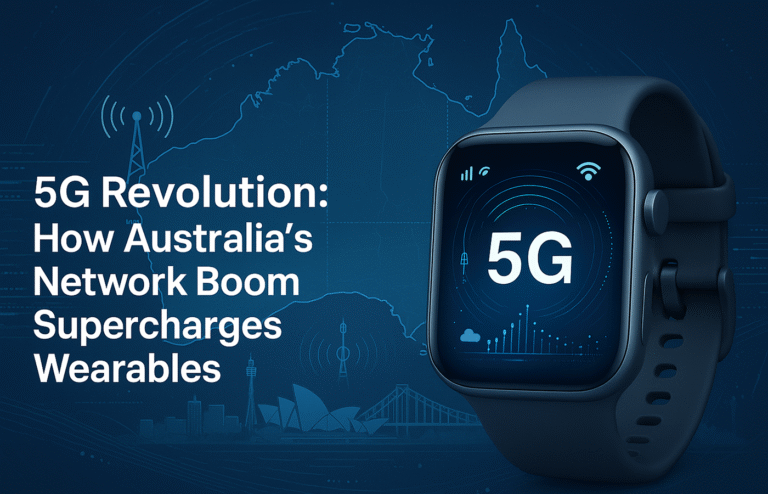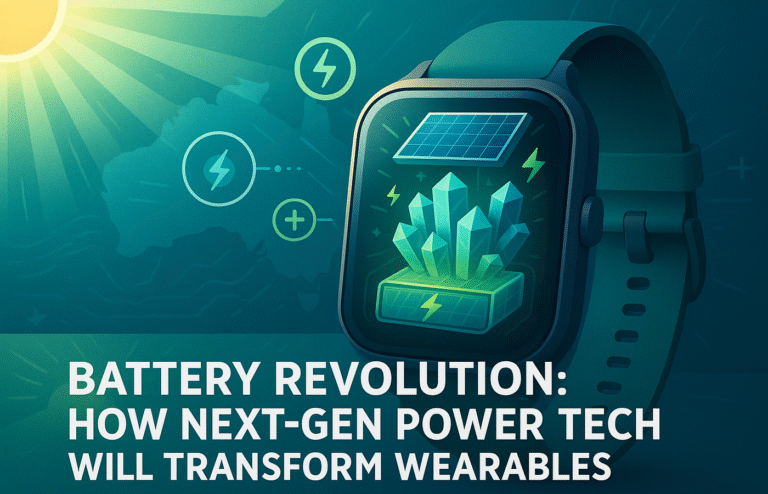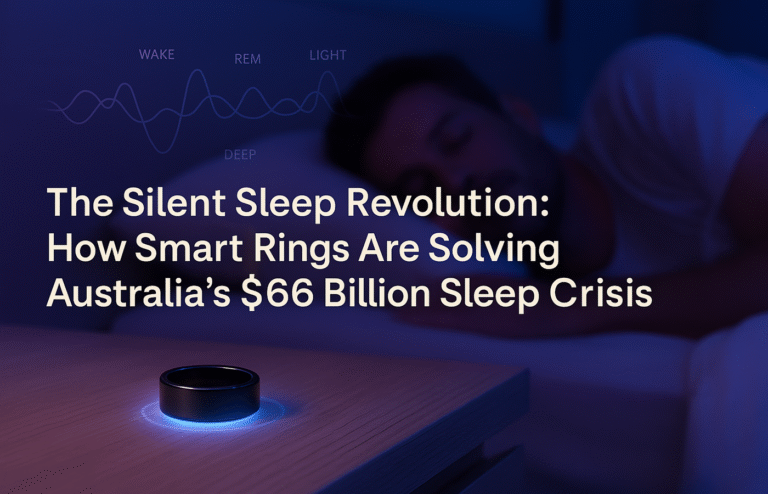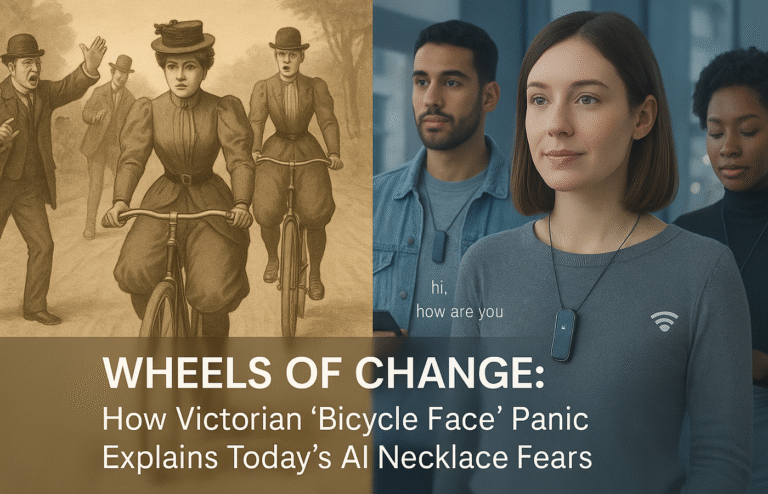The Hidden Intelligence: How Smartwatch Sensor Fusion Technology Detects Your Activities
Your smartwatch’s ability to recognise running isn’t magic—it’s sophisticated sensor fusion technology combining multiple sensors through advanced AI algorithms.
Core Technologies:
● Accelerometers measure three-dimensional movement patterns detecting rhythmic running versus walking signatures
● Gyroscopes track rotational wrist movements and arm swing intensity differences
● Heart rate sensors monitor pulse changes accompanying exercise intensity variations
● GPS provides speed and location data for comprehensive activity validation
Processing:
● Algorithms analyse sine wave patterns filtering genuine steps from gestures
● Personalised calibration learns individual gait characteristics over weeks
● Step counting accuracy exceeds 95% under normal conditions
Market Impact:
Sensor fusion commands over 54% of global wearable AI revenue.
The Hidden Intelligence: How Your Smartwatch Really Knows You’re Running
Ever wondered how that tiny device on your wrist instantly recognises when you’ve switched from walking to running, or how it can tell the difference between climbing stairs and cycling? The answer lies in one of the most sophisticated engineering achievements of our time: sensor fusion technology.
While your smartwatch might look simple from the outside, it’s actually a marvel of miniaturised engineering that would make NASA engineers proud. Inside that sleek case lies an array of sensors working together through advanced algorithms to create what experts call “sensor fusion” – a technology so crucial that of all the money spent on wearable AI devices globally, more than half (54.4%) goes toward the sensor components.
The Sensor Symphony Inside Your Wearable
Think of your smartwatch as a tiny laboratory constantly analysing your body’s movements and vital signs. Unlike a single instrument playing solo, sensor fusion orchestrates multiple sensors to create a complete picture of your activity.
Accelerometers measure linear acceleration in three dimensions, detecting how fast your wrist moves forward, backward, up, down, left, and right. When you’re walking, these movements follow predictable patterns – gentle, rhythmic accelerations that differ dramatically from the more vigorous, higher-impact patterns of running.
Gyroscopes complement accelerometers by measuring rotational movement. They detect how your wrist twists and turns, providing crucial data about your arm swing patterns. Runners typically have a more pronounced arm movement compared to casual walkers, and gyroscopes capture these subtle differences.
Heart rate sensors use optical technology to monitor your pulse through your skin. During exercise, your heart rate patterns provide vital clues about activity intensity. However, this technology faces unique challenges we’ll explore shortly.
GPS sensors track your location and movement speed, though they’re not always reliable indoors or under heavy tree cover. Modern wearables cleverly combine GPS data with internal sensors to maintain accuracy even when satellite signals are weak.
The Mathematical Magic Behind Step Counting
Here’s where things get fascinating. Your smartwatch doesn’t simply count every wrist movement as a step – that would be wildly inaccurate. Instead, it employs sophisticated mathematical models that analyse patterns in accelerometer data.
The device looks for specific signature patterns in your movement data. When you walk, your wrist follows a predictable sine wave pattern as your arms swing naturally. The algorithm identifies these patterns and filters out non-walking movements like gesturing, typing, or simply moving your arm.
Furthermore, the system calibrates itself to your personal movement patterns. After wearing your device for several weeks, it learns your unique gait characteristics – how fast you typically walk, your natural arm swing amplitude, and your personal activity patterns. This personalisation dramatically improves accuracy over time.
Modern algorithms can achieve step counting accuracy rates exceeding 95% under normal conditions. However, activities like pushing a pram or carrying shopping bags can still throw off the calculations, as they alter your natural arm movement patterns.
Activity Recognition: The AI Detective Work
Distinguishing between different activities requires even more sophisticated analysis. When you start running, multiple changes occur simultaneously:
Your step frequency increases, creating faster, more regular patterns in the accelerometer data. Your heart rate typically rises within 30-60 seconds of beginning exercise. GPS shows increased movement speed, while gyroscope data reveals more pronounced arm movements.
The AI algorithms analyse these combined signals to make activity determinations. Swimming presents unique challenges since accelerometer patterns differ significantly when your arm movements are constrained by water resistance. Many devices now include dedicated swimming modes that rely more heavily on stroke counting algorithms rather than traditional step-counting methods.
Cycling detection showcases sensor fusion at its finest. While your wrist movement patterns might seem similar to walking, the gyroscope data reveals the difference – cyclists’ wrists remain relatively stable compared to the pronounced rotation patterns of walking or running. Combined with GPS speed data and minimal vertical acceleration patterns, the system can confidently identify cycling activities.
The Heart Rate Monitoring Challenge
Optical heart rate monitoring represents one of the most technically challenging aspects of wearable technology. The sensors use LED lights (typically green) to illuminate your skin and measure the slight colour changes that occur with each heartbeat.
However, this technology faces significant limitations. Darker skin tones absorb more light, making it harder for sensors to detect the subtle changes needed for accurate readings. Many manufacturers have responded by incorporating multiple LED colours and improving algorithm sensitivity, but disparities in accuracy across different skin tones remain an ongoing challenge in the industry.
Movement artifacts present another hurdle. During intense exercise, your wrist movements can interfere with the sensor’s ability to maintain consistent skin contact, leading to erratic readings. Modern devices combat this through improved sensor placement, tighter band designs, and algorithms that can filter out movement-related noise.
Additionally, factors like ambient light, tattoos, scars, and even very cold weather can affect heart rate sensor accuracy. The most advanced wearables now use multiple measurement techniques and machine learning to improve reliability across diverse conditions.
Why Sensor Fusion Dominates the Market
The dominance of sensor fusion technology in wearable AI revenue isn’t accidental. This technology enables the multi-functionality that consumers demand from modern wearables. Without effective sensor fusion, your smartwatch would be little more than an expensive digital timepiece.
The market success stems from sensor fusion’s ability to provide actionable health insights rather than raw data. Users don’t want to manually interpret accelerometer readings – they want their device to automatically recognise when they’re exercising and provide relevant feedback about their performance.
Moreover, sensor fusion enables predictive health features that are increasingly valuable to consumers. By analysing patterns in your movement, heart rate, and activity data, advanced algorithms can detect irregularities that might indicate health issues, from irregular heart rhythms to changes in mobility that could signal developing conditions.
The Engineering Constraints
Creating effective sensor fusion in a device smaller than a credit card presents extraordinary engineering challenges. Power consumption remains the primary constraint – each additional sensor and processing algorithm drains battery life.
Engineers must carefully balance sensor accuracy against power efficiency. Running GPS continuously provides the most accurate location data but devastates battery life. Modern wearables employ intelligent GPS sampling, activating full tracking only when specific activity patterns are detected.
Heat dissipation presents another challenge. Intensive AI processing generates heat, but wearables must remain comfortable against skin. This constraint limits the processing power available for real-time analysis, requiring efficient algorithms that can provide accurate results with minimal computational overhead.
Component miniaturisation continues pushing physical boundaries. Fitting multiple sensors, processing chips, batteries, and wireless communication components into increasingly slim form factors requires constant innovation in component design and integration.
The Future of Sensor Fusion
The next generation of wearable AI promises even more sophisticated sensor fusion capabilities. Emerging technologies include advanced optical sensors that can monitor blood glucose levels non-invasively, stress detection through skin conductance measurements, and even early illness detection through subtle changes in movement patterns.
Machine learning models are becoming more personalised and accurate. Future devices will better adapt to individual users’ unique physiological characteristics and activity patterns, potentially reducing the accuracy disparities currently seen across different demographics.
Integration with environmental sensors represents another frontier. Future wearables might incorporate air quality sensors, UV monitors, and temperature sensors to provide comprehensive health and wellness insights that consider both your body’s status and your environmental conditions.
As sensor fusion technology continues advancing, the line between consumer wearables and medical-grade monitoring devices continues blurring. The engineering marvels we wear today represent just the beginning of what’s possible when sophisticated sensors meet intelligent algorithms in devices designed for everyday use.
Your smartwatch’s ability to know you’re running isn’t magic – it’s the result of remarkable engineering that transforms multiple streams of sensor data into meaningful insights about your health and activity. Understanding this technology helps us appreciate not just what our devices can do today, but the incredible potential they hold for the future of personal health monitoring.








